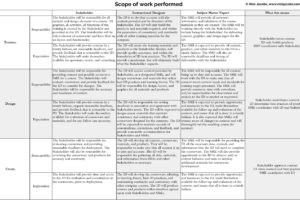Welcome to my first post on instructional design. There are a lot of other blogs, websites, and entire businesses dedicated to the industry of instructional design, so why is mine going to be different? Well, let me tell you.
I could wax poetic and theoretical on the history and theories of instructional design, but that isn’t the kind of writer I am. I am also a mentor – I help people figure out how to do their job. While theory is great and necessary, it doesn’t tell someone how to do instructional design, just what should inform the design of instruction. So, to make it easier to get straight to the point, if you want to know the history of instructional design, check out this cool infographic.
If you want resources on learning theory and other tidbits of knowing instructional design, Google will give you a lot of resources. Enjoy the knowledge, it is really quite fascinating to read.
No, I am going to do something completely different. I am going to discuss how to do it and not use all of the fancy flow charts. I am going to talk about the need for processes, the products you should deliver, and explain industry terms you will need to know to do the job.
For this post, however, I am going to launch into a tad bit of a rant. I am going to tell you some of the things that instructional design is and is not.
First and foremost, my biggest pet peeve, is the direction that this industry is going. Not necessarily because of the people in the industry (although that is a factor, when people claim to be something they are not), but because of the seeming absolute lack of understanding of what instructional design is within the business world. So, read my lips when I say this: instructional design is NOT graphic design for training.
Yes, that is right. Instructional design is not being told “Hey, we need to train stuff. Here’s the stuff” and then you making slide decks with cool graphics, lots of whizbang transitions, and a printed book of slides with note lines for a trainer / instructor / facilitator / title-du-jour to present to a room full of people. No, at most – best, that is a Content Developer, and even that is not entirely accurate.
Just as trainers being promoted because they know a job well doesn’t make that person a great trainer, having been a trainer and/or knowing how to use PowerPoint does not make one an instructional designer. Those are great attributes, but they are not definitions.
“Training, in its most basic definition, is the process of changing or establishing behavior.”
Instructional design is a process. It is a process of analysis, research, study, design, measurement, evaluation, and adjustment. Training, in its most basic definition, is the process of changing or establishing behavior. Instructional design is the process of discovering what those behaviors are and then developing the process to establish or change those behaviors.
Instructional designers should be the supreme questioners – the philosophers of training. When someone declares “we need training!” the instructional designer should ask several questions immediately:
- What is to be trained?
- Why is it to be trained?
- Who and what prompted this need?
- What are the expected outcomes of this training?
- Do you really need a training?
Once those questions are answered, you will know if you have a training and what it should start to look like. However, everything is a training. Like I said earlier, training is about changing or establishing behavior. Disseminating information is not training, it is a knowledge base article, an email, or, at most, a five minute conveyance of information in an eLearning format, like an update release.
So, since I have stated in basic terms what instructional design is, what attributes should an instructional designer have?
If you do not have an innate sense of curiosity, a desire to discover and consistently seek learning opportunities, and a thirst for analysis, instructional design is not for you.
If you are not flexible and confident enough to challenge stakeholders, and then humble enough to be challenged by their questioning, you probably don’t have the confidence to be an instructional designer.
If you are not able to work in teams of equally driven, analytical, and curious people, and are unwilling to be open to other ideas and perspectives, you should seriously look elsewhere.
Instructional design isn’t – shouldn’t – be just about building slide decks or churning out products, it is about making sure that people have the best opportunities to change their behaviors, and potentially changing their lives for the better.





